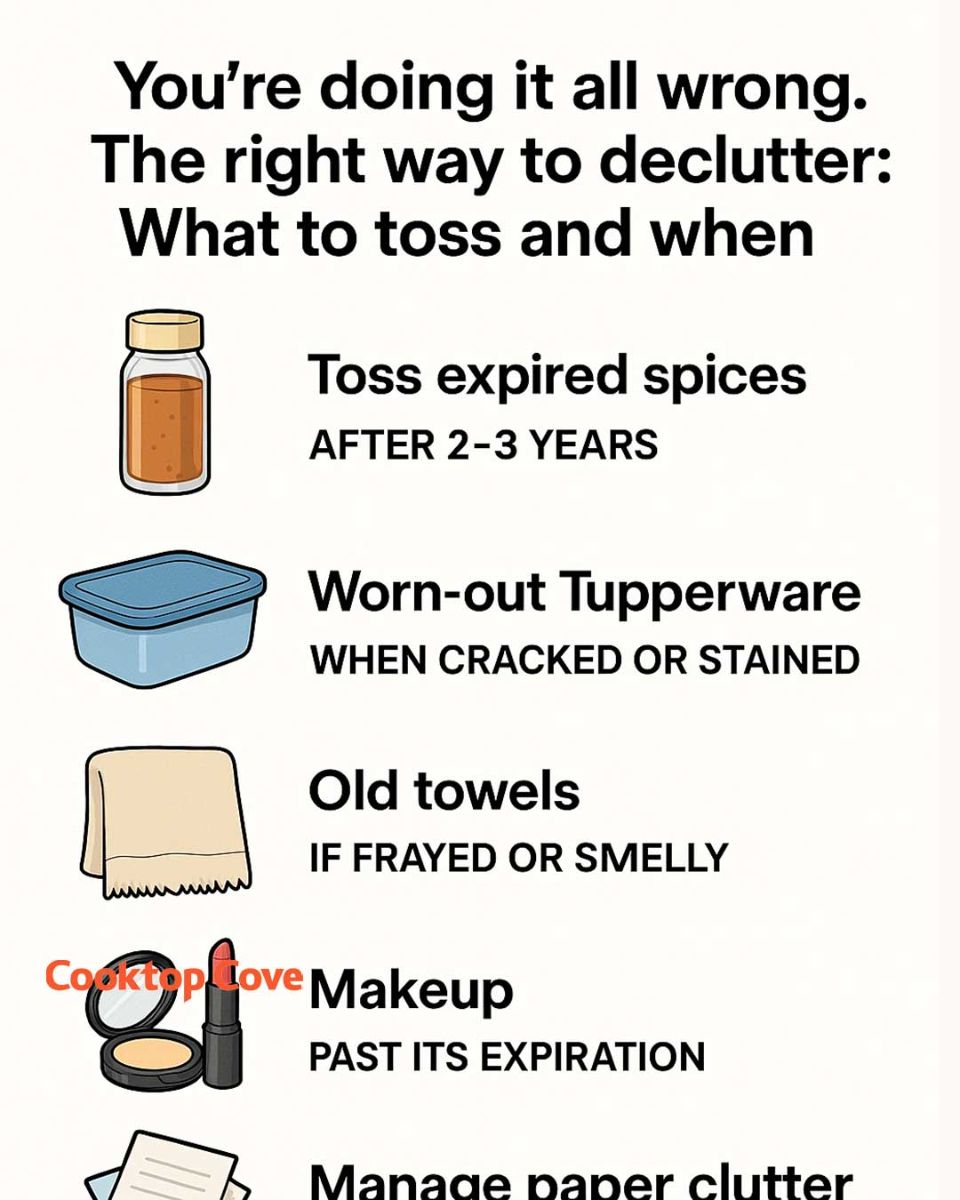You’re doing it all wrong. The right way to declutter: What to toss and when
Morgan Reed
Contributing Writer
Print this recipe
In today’s fast-paced world, our homes can quickly become overwhelmed with items that no longer serve us. Decluttering is not just about tidying up; it’s about creating a space that supports our well-being and productivity. By understanding the importance of decluttering, we can make more intentional choices about what we keep in our lives. A clutter-free environment can lead to a more organized mind, allowing us to focus on what truly matters.
The Psychological and Practical Benefits of Decluttering
Decluttering offers numerous psychological benefits, such as reducing stress and anxiety. A cluttered space can be overwhelming and distracting, making it difficult to relax or concentrate. Practically, decluttering can save time and money. By knowing exactly what you have and where it is, you can avoid unnecessary purchases and spend less time searching for misplaced items. Additionally, a tidy home can improve your overall quality of life, making it a more enjoyable place to live.
Common Mistakes People Make When Decluttering
One common mistake is trying to declutter too much at once, which can lead to burnout and frustration. Another is holding onto items out of guilt or obligation, rather than because they are truly needed or loved. People often underestimate the time required to declutter effectively, leading to incomplete projects. Lastly, many fail to establish a system for maintaining a clutter-free environment, resulting in a quick return to chaos.
The Right Mindset: How to Approach Decluttering Effectively
Approach decluttering with a positive mindset, viewing it as an opportunity to improve your living space and mental clarity. Set realistic goals and be patient with yourself. Remember that decluttering is a process, not a one-time event. Focus on the benefits of a tidy home and let go of the guilt associated with discarding items. Be honest about what you truly need and love, and be willing to let go of the rest.
Creating a Decluttering Plan: Setting Goals and Priorities
Start by setting clear, achievable goals for your decluttering project. Prioritize areas that cause the most stress or are used most frequently. Break the process into manageable tasks, such as tackling one room or category at a time. Establish a timeline to keep yourself accountable, and consider enlisting the help of family or friends for support. Remember to celebrate your progress along the way.
Room-by-Room Guide to Decluttering Your Home
Begin with the entryway, as it’s the first impression of your home. Move on to the kitchen, focusing on clearing countertops and organizing cabinets. In the living room, reduce excess decor and organize media. For bedrooms, focus on clothing and personal items. In the bathroom, discard expired products and organize toiletries. Finally, tackle storage areas like the garage or attic, where items tend to accumulate.
20 Common Things to Declutter and When to Toss Them
Identifying common items to declutter can simplify the process. Here are 20 items to consider:
1. Expired Spices: Toss After 2–3 Years
Spices lose their potency over time, affecting the flavor of your dishes. Check expiration dates and replace them every 2–3 years to ensure your meals taste their best.
2. Worn-Out Tupperware: Discard When Cracked or Stained
Cracked or stained Tupperware can harbor bacteria and affect food quality. Regularly inspect your containers and replace those that are no longer in good condition.
3. Old Towels: Replace If Frayed or Smelly
Towels can become less absorbent and develop odors over time. If your towels are frayed or have a persistent smell, it’s time to replace them with fresh ones.
